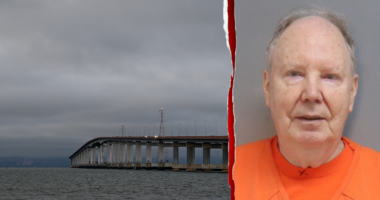Share this @internewscast.com
A BREAKTHROUGH may have been made in the hunt for Hitler’s legendary gold train – said to be packed with jewels, gold and the lost £250m Amber Room.
Since 1945, both governments, the Polish Army, and treasure enthusiasts have explored the area in search of the train, and they now suspect it might be located in northern Poland.
Polish authorities have officially granted permission for a new search, according to Wirtualna Polska.
Reports suggest that Gdańsk’s Office for the Protection of Monuments has approved drilling and archaeological investigations in Dziemiany, a region within the Kościerzyna district of northern Poland.
The search aim to uncover a suspected WWII-era bunker, which could conceal the fabled train and its valuable artefacts.
Marcin Tymiński, spokesperson for the Pomeranian Voivodeship Conservator of Monuments, said there might be a hidden German deposit in Dziemiany.
“Some speculate it could even be the lost Amber Room,” he added.
According to Jan Delingowski, who leads the quest for the treasure, the Nazis established a military training area in Dziemiany for SS units towards the end of 1943.
Delingowski, a former merchant fleet radio officer, has spent the last decade searching for the legendary train in the region of Kashubia.
In a Sunday interview on the YouTube channel History Hiking, he referred to historical records that associate the potential treasure site with Nazi official Erich Koch, as reported by RMF24.
Erich Koch was a Gauleiter of the Nazis in East Prussia from 1928 until 1945.
After WWII, Koch was tried in Poland and convicted in 1959 for war crimes – including responsibility for the deaths of around 400,000 Poles.
Koch was sentenced to death, but the sentence was never carried out – officially due to his poor health.
However, according to declassified documents from Poland’s Institute of National Remembrance (IPN), referenced by Rzeczpospolita, the true motive was that the communist-era Polish Security Service and the Soviet KGB hoped he would disclose the whereabouts of the Nazi gold train.
An inmate who met Koch in the 1980s claimed the Nazi official revealed the treasure’s hiding place before his death.
Citing the inmate’s account, Delingowski says the convoy veered off the road “somewhere between Czersk and Człuchów, heading toward the Oder”.
The crates are said to be stashed in a bunker disguised and hidden “on a hill near a lake, at the site of former SS barracks”.
Previous explorations of the region led to the discovery of a brick tank, Wirtualna Polska reports.
Based on the testimony and Delingowski’s decade-long research, authorities have granted permission to investigate the site.
The official statement reads: “Based on data from earlier heritage assessments, there is substantial evidence to suggest that a World War II-era slit bunker exists on the site (…), potentially qualifying it as a historical monument.”
“Furthermore, historic material – including archaeological artefacts – may be present inside and around it.”
The legend of the Nazi gold train
THERE is an enduring urban legend that deep beneath the mountains of southwest Poland lies a Nazi gold train – also known as the Wałbrzych gold train.
According to the legend, the train was loaded with precious jewels, gold and amber from the Amber Room of the Czars.
The Amber Room, originally created for Russian Tsar Peter the Great in the 1700s, was looted by the Nazis during their invasion of the Soviet Union in 1941.
It is considered the crown jewel of the missing Nazi treasure haul, often dubbed the “Eighth Wonder of the World” after being stolen from Catherine Palace near St. Petersburg.
According to the legend, the train was hidden in a sealed tunnel or underground bunker or mine somewhere in the Central Sudetes.
Since 1945, numerous searches – including operations by the Polish Army during the Cold War – have failed to uncover any trace of the train.
Interest in the legend surged again between 2015 and 2018, when two Polish treasure hunters claimed they had discovered the train using ground-penetrating radar.
This claim led to a high-profile excavation effort involving the Polish military, government officials and private backers.
But the dig was eventually abandoned after the so-called anomaly turned out to be a natural geological formation.
And so, the legend lives on – a group of enthusiasts has even built a full-scale replica of a Nazi armoured train, hoping to turn it into a tourist attraction.





















